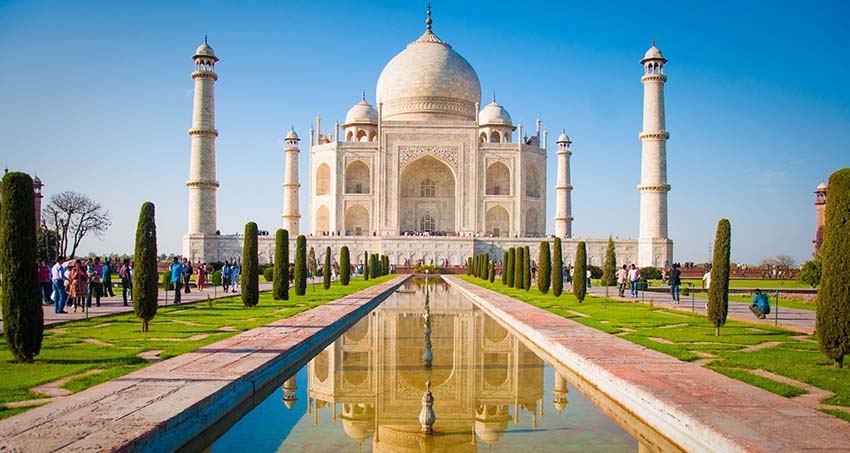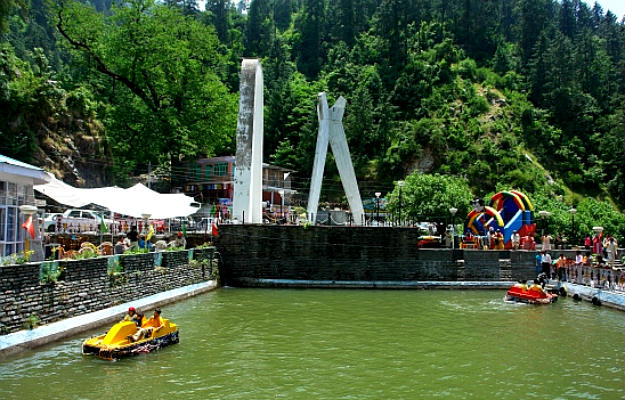Uttar Pradesh
1 Destinations to Visit
Uttar
Pradesh is a state in northern India. Its city of Agra is home to the
iconic Taj Mahal monument, a colossal, domed, white-marble mausoleum
honouring the wife of 17th-century Mughal emperor Shah Jahan. Nearby are
the red-brick walls of Agra Fort, a fortified palace dating to the 16th
and 17th centuries. Capital Lucknow has Muslim memorial shrines Bara
Imambara and calligraphy-adorned Chota Imambara.Uttar Pradesh, with a total area of 243,290 square kilometres
(93,935 sq mi), is India’s fourth largest state in terms of land area.
It is situated on the northern spout of India and shares an
international boundary with Nepal. The Himalayas border the state on the
north, but the plains that cover most of the state are distinctly different from those high mountains. The larger Gangetic Plain region is in the north; it includes the Ganges-Yamuna Doab, the Ghaghra plains, the Ganges plains and the Terai. The smaller Vindhya Range and plateau region is in the south. It is characterised by hard rock strata and a varied topography of hills, plains, valleys and plateaus. The Bhabhar tract gives place to the terai area which is covered with tall elephant grass and thick forests interspersed with marshes and swamps.
History
Modern human hunter-gatherers have been in Uttar Pradesh since between around 85,000 and 72,000 years ago. There have also been prehistorical finds in Uttar Pradesh from the Middle and Upper Paleolithic dated to 21,000–31,000 years old and Mesolithic/Microlithic hunter-gatherer's settlement, near Pratapgarh, from around 10550–9550 BC. Villages with domesticated cattle, sheep, and goats and evidence of agriculture began as early as 6000 BC, and gradually developed between c. 4000 and 1500 BC beginning with the Indus Valley Civilisation and Harappa Culture to the Vedic period and extending into the Iron AgeClimate
Uttar Pradesh has a humid subtropical climate and experiences four seasons. The winter in January and February is followed by summer between March and May and the monsoon season between June and September. Summers are extreme with temperatures fluctuating anywhere between 0 °C and 50 °C in parts of the state. The Gangetic plain varies from semiarid to sub-humid. The mean annual rainfall ranges from 650 mm in the southwest corner of the state to 1000 mm in the eastern and southeastern parts of the state. Primarily a summer phenomenon, the Bay of Bengal branch of the Indian monsoon is the major bearer of rain in most parts of state. It is the south-west monsoon which brings most of the rain here, although rain due to the western disturbances and north-east monsoon also contribute small quantities towards the overall precipitation of the state.Land area: 243,286 km²
Population: 204.2 million (2012)

Rohtang Pass
Rohtang Pass, 51 kms from Manali. Located at a height of 3980
m, the Pass once served as a crucial trade route, and
still remains the

ChandigarhCity in IndiaChandigarh,
the capital of the northern Indian states of Punjab and Haryana, was
designed by modernist architect Le Corbusier. His modernist buildings
include the Capitol

Blessed with some of the most spectacular and beautiful landscapes
anywhere, it is a travellers paradise -lofty snow peaks, deep gorges,
lush green valleys, fast flowing rivers, enchanting mountai

The Kangra valley is one of the most picturesque valleys of lower
Himalayas. The valley, sheltered by the sublime Dhauladhar range, is
green and luxuriant. It provides a tremendous contrast in n

Dharamshala is a city in the Indian state of Himachal Pradesh.
Surrounded by cedar forests on the edge of the Himalayas, this hillside
city is home to the Dalai Lama and the Tibetan government-in-

Solang Nullah is in a side valley at the top of the Kullu valley.
It is the site of Manali’s ski school and, once the snow
has gone, all the local paragli













